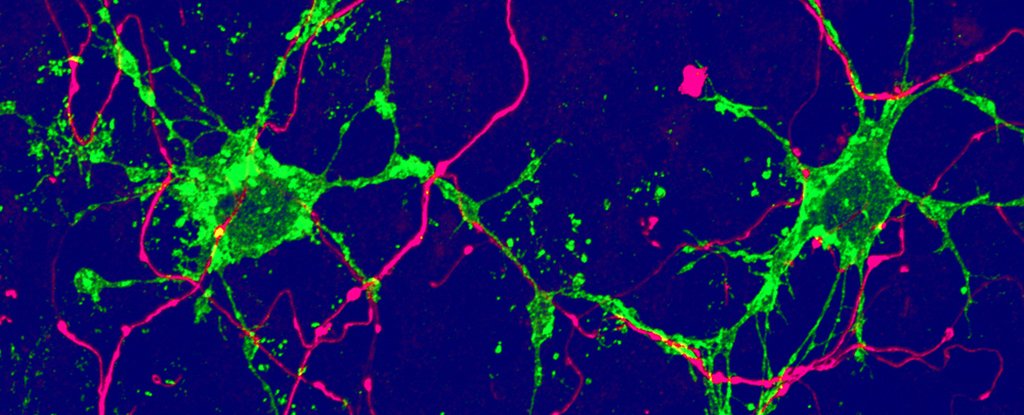Products You May Like
Despite us having mapped and categorized so much of mammal biology already, there are still new surprises lying in wait. Now, scientists have found two new types of glia – a type of support cell – in mouse brains.
Glial cells are usually thought of as the support act in the brain and the spinal cord, adding structure and protection to the neurons that carry electrical impulses. These new glia look like they could have an influence over how the brain adapts and repairs itself, even in adulthood.
An investigation led by researchers from the University of Basel in Switzerland took a closer look at an area of the brain right on the cusp of a fluid-filled ventricle. The region is known as the ventricular-subventricular zone, and it’s found in all vertebrates, including human beings.
They looked at multipotent neural stem cells in adult mice – these cells can turn into various types of brain tissue – and discovered an ‘activation switch’ that led to sleeping stem cells in this zone developing into glial cells, including the two new types.
So, not only is this reservoir of dormant stem cells able to produce neurons, it’s also the birthplace of different types of glial cells as well.
In a model of demyelination, or neuron damage, the team found that both of their new glial cell types were activated. While the details aren’t yet clear, the finding suggests these cells have some part to play in brain plasticity and repair, something that could be analyzed in future research projects.
What’s more, one glial cell type was found on the wall of the brain ventricle rather than in the brain tissue – this unexpected positioning hints that the new cell is able to sense and handle long-range signals from other areas in the brain, though again more research is going to be needed to know for sure.
A commentary written by biologists Katherine Baldwin from the University of North Carolina and Debra Silver from Duke University, emphasizes this new mouse study could be an important step in our quest to better understand gliogenesis – how stem cells turn into glial cells – and how late into adult life it might continue.
“This discovery suggests that adult gliogenesis is more widespread than previously thought, laying the groundwork for potential regenerative therapies,” write Baldwin and Silver, who weren’t involved in the study.
The implication is that if we know more about how these new cell types work, we can perhaps harness them to improve brain repair – that damage to the nervous system might not be quite as permanent as we thought.
“The identification of two unknown glial cell types in the adult brain further highlights the extent of glial diversity and opens vistas into understanding the role of neural stem cells and glia in health and disease,” write the researchers in their published paper.
The research has been published in Science.
